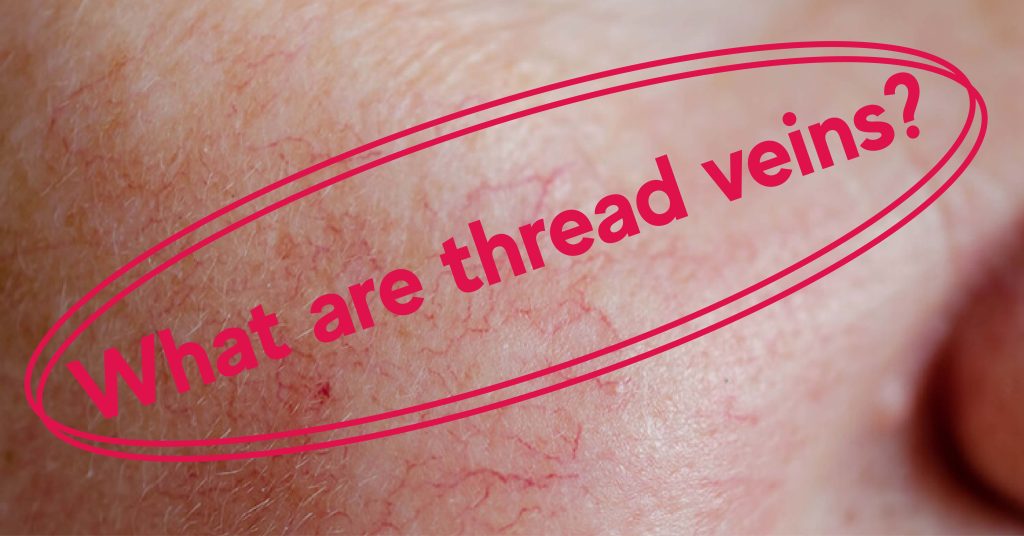The Treatments
What Are Thread Veins?
The structure of blood vessels, including thread veins, is composed of several layers, including an inner lining called the endothelium, a smooth muscle layer, and an outer layer called the adventitia. The walls of blood vessels contain proteins, such as collagen and elastin, which give the vessels their strength and flexibility. However, IPL treatment works by targeting and damaging the blood vessels that cause thread veins, and directly targeting specific proteins in the vessel walls. When the vessel walls are damaged by the light energy, the body’s natural healing process removes the damaged tissue over time, leading to the improvement in the appearance of the thread veins.
Intense Pulse Light (IPL) treatment works by emitting high-intensity pulses of visible light into the skin. The light energy is absorbed by the blood vessels that cause thread veins, which heats and damages the vessel walls. This leads to the destruction of the vessel and the body’s natural healing process then removes the damaged tissue over time. The procedure is non-invasive and typically doesn’t require any downtime, making it a popular option for people looking to remove veins. It’s important to note that while IPL is generally considered safe, it can cause side effects such as redness, swelling, and skin discoloration.
IPL treatment can be used to treat thread veins below the heart. However, the effectiveness of the treatment may vary depending on the location and size, as well as the individual’s skin type and overall health. In general, thread veins on the legs are more difficult to treat than those on the face or other parts of the body, as the veins in the legs are often larger and deeper. Additionally, the blood flow in the legs can also make it more challenging to destroy the blood vessels causing the thread veins. As a result, more sessions may be needed to achieve optimal results.
Intense Pulse Light (IPL) treatment has been shown to be effective in removing thread veins for many people. However, as with any cosmetic procedure, individual results may vary. The effectiveness of IPL treatment depends on several factors, such as the size and location, the individual’s skin type, and overall health. In general, IPL is considered a safe and effective method for removing thread veins for most people. It’s important to note that while IPL can produce good results, it may not be a suitable treatment option for everyone, and it’s important to consult a dermatologist or skin care professional to determine the best course of action for you.
The number of sessions needed for Intense Pulse Light (IPL) treatment to effectively remove varies from person to person. It depends on factors such as the size and location of the veins, the individual’s skin type, and overall health. On average, most people need 2 to 5 sessions, spaced 3 to 4 weeks apart, to see significant improvement in the appearance of their thread veins. However, some people may need more or fewer sessions to achieve their desired results.




